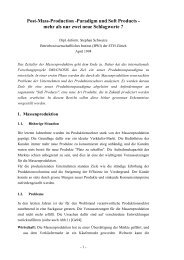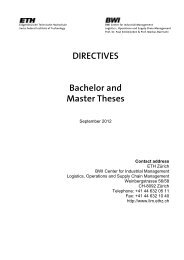The China Venture
The China Venture
The China Venture
Create successful ePaper yourself
Turn your PDF publications into a flip-book with our unique Google optimized e-Paper software.
including laws, decisions and ratified international treaties. 7 <strong>The</strong> third level are the documents<br />
enacted by the Standing Committee of the NPC. As a consequence of the NPC’s meetings<br />
held only once a year, the Standing Committee in practice represents the most important<br />
organ for the creation of new laws. <strong>The</strong> forth level comprises the legal documents made by<br />
the State Council (administrative regulations) and the documents issued by its ministries,<br />
commissions and departments (administrative rules).<br />
<strong>The</strong> above four levels of the legal structure are in a way easy to understand and easy to track.<br />
When it comes to the legal documents of the lower levels of <strong>China</strong>’s governmental structure,<br />
there exists a practically insurmountable flood of rules and regulations.<br />
A very special part in the Chinese legal struc ture play the documents in relation with the “One<br />
country-Two Systems” policy of the PRC. This set of laws deals with the reunification of<br />
mainland <strong>China</strong> with Hong Kong and Macau. Thus when realising this reunification, the PRC<br />
may, according to Article 31 of the Constitution, establish special administrative regions to<br />
retain the capitalist systems in these regions. Additionally, the legal system of these special<br />
administrative regions may be safeguarded. <strong>The</strong>refore, the NPC on April 04, 1990 adopted the<br />
Basic Law of the Hong Kong Special Administrative Region and decided to establish this<br />
special administrative region on July 01, 1997 when <strong>China</strong> resumed its sovereignty over Hong<br />
Kong. And on March 31, 1993 it adopted the Basic Law of the Macau Special Administrative<br />
Region and decided to establish this special administrative region on December 20, 1999<br />
when <strong>China</strong> will resume its sovereignty over Macau. 8 As regards the separation of powers<br />
between the central authorities and the special administrative regions, the powers and<br />
functions enjoyed by the central authorities are strictly limited to those required for the<br />
protection of the national sovereignty and reunification of the motherland.<br />
2.2.4 Judicial Structure<br />
As already explained above, the judicial structure in <strong>China</strong> not only refers to courts, but also<br />
to procuratorates. <strong>The</strong> presidents of courts and procurator -generals are appointed by the<br />
pe ople’s congresses on the same levels, whereas the judges and procurators are appointed by<br />
the standing committees of the respective people’s congresses.<br />
7 A list of multinational treaties applicable to <strong>China</strong> may be found under:<br />
http://www.qis.net/chinalaw/treat1.htm.<br />
8 Legal documents relating to the special administrative regions of Hong Kong and Macau may be<br />
found under: http://www.qis.net/chinalaw/lawtran1.htm.<br />
12






